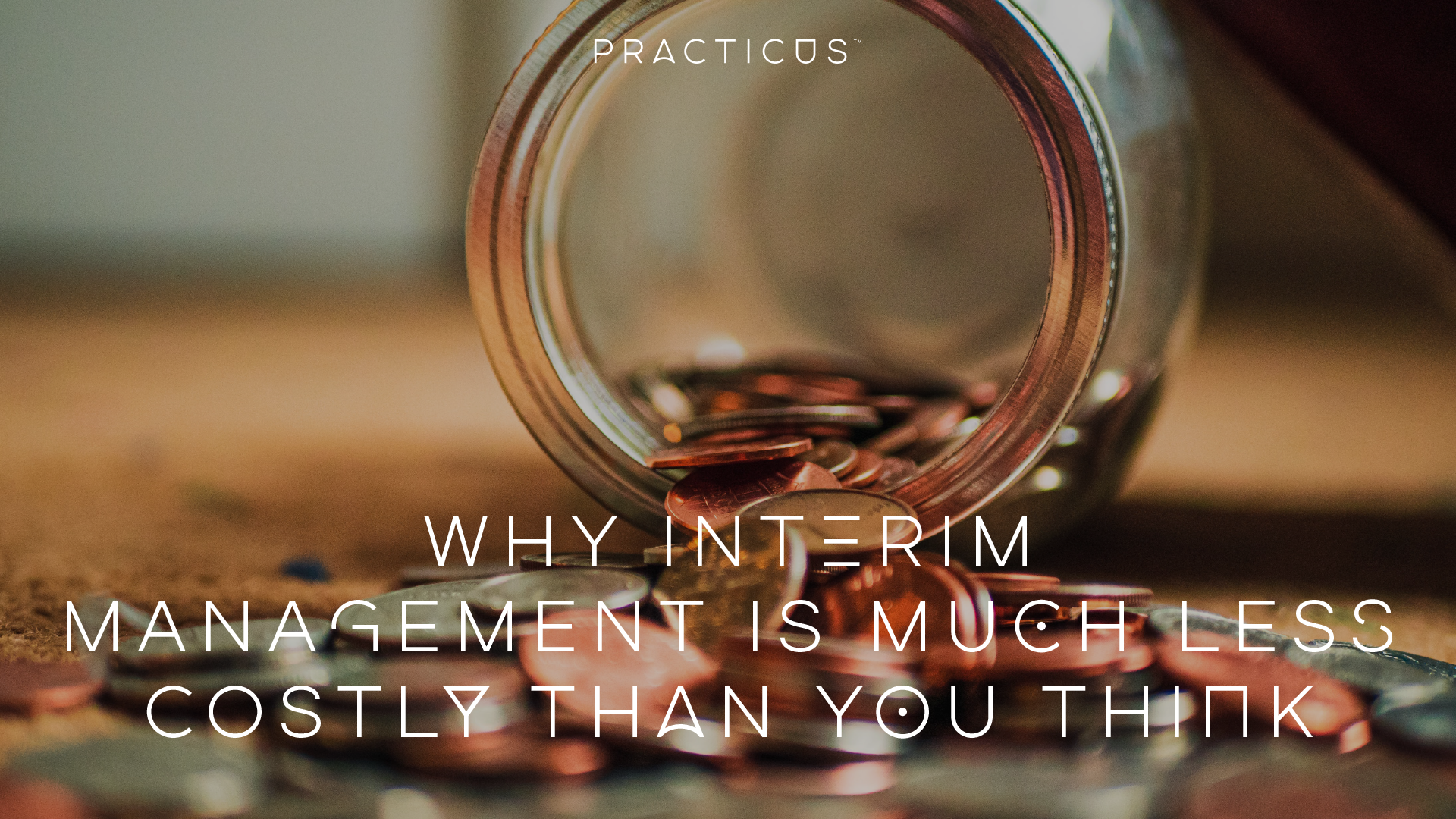Why interim management is much less costly than you think

As someone who places senior interim executives into companies, I often find that many still have a mythological fear about choosing interims for their big change programmes.
It is partly a concern about using an outsider on a temporary basis, i.e. are they invested in my organisation, do they care if we succeed or fail? And it’s equally about the face-value cost of an interim’s day rate versus a permanent salary.
As a result, company careers sites often post vacancies for permanent project and change management roles. The mentality is that the initiative is too important to go to an external, even if it’s only on the interim market that they’ll find the experience, confidence and skills they need. Companies who are restructuring, acquiring or merging would be classic examples for this. Their recruiters are geared up to sell benefits and long-term career prospects for a role that is time-limited by its very nature.
So are interims the kind of transient fly-by-nights that many fear? And is the cost really higher than a permanent employee?
A convenient truth
I speak to many clients hiring permanent people for time-bound projects and I ask them if they would be open to offer interim assignments for these roles. I explain that interims have seen the movie play out several times before with similar organisations. Many are seasoned experts in organisational design, process re-engineering, new systems implementation, mergers and acquisitions. And they have a good track record of seeing the project through to completion, offering sound and objective advice throughout the whole change journey. It’s what interims are for. They’re driven to leave a strong legacy behind them. They have to as they depend on that legacy to secure future work. Track record is everything if you want to make a career out of interim management. All our interims, for example, have to have undergone rigorous due diligence on past assignments in order to be put forward to a client.
Then the cost argument comes up. Permanent people are cheaper and interim management is very expensive. Not so, I say, and here’s why.
The hidden costs
- Total Rewards Compensation – A permanent employee for a senior level role isn’t just paid a salary. They also gain pension benefits, car allowances and other provisions in line with their seniority. These kinds of benefit scale with the salary of the person, that is to say, they add a lot to the cost of hiring a senior person and shouldn’t just be lumped in with general workforce overheads.
- Holiday pay – A permanent employee will receive paid holiday, an interim won’t. When comparing interim day rates with permanent costs, many aren’t doing their maths correctly. There are a minimum of 28 days more a year that you’ll pay a permanent employee for which you won’t have to pay an interim. And on the subject of pay don’t forget that permanent employees get paid for bank holidays and often qualify for sick pay. Interims don’t.
- National insurance – A sizeable element of the cost of any employee is the employer’s national insurance, around 13.8% of salary at this level, and again that’s a significant cost to add on a permanent hire that you simply don’t have to pay for an interim professional.
- Bonus – A senior employee is likely to have some element of performance-related pay or a sizeable bonus of some kind linked to their role, possibly share options. Normally, this will amount to around 20-25% of salary. Again, no small fry cost-wise. You can argue that they may not succeed so you may not have to pay it but then again, you want them to succeed. It’s the whole point of bringing them in. If they don’t, you’ll have wasted a lot more money overall and the bonus will pale into insignificance. In the interim management market, on the other hand, bonuses are not a normal expectation, they’re very rare and, if it’s not working out, they’re a lot faster to exit and replace.
- Exit costs – Interims are also a lot cheaper to exit than a permanent employee. A permanent employee at a senior level may have three months’ notice period. That’s three months’ worth of salary and a lot of time lost for your project. Interim notice periods vary but are virtually always within a month or less.
The net result is that interims often end up costing an organisation less in real terms and in many other cases the cost difference is negligible.
You also have to factor in the reason why you are hiring. If it’s for an important programme, a merger or a transformation initiative, the costs of getting it wrong will often be many magnitudes greater than the cost of either an interim or a permanent employee. These are key factors in calculating the ROI of an interim manager over other options.
Interim managers are seasoned individuals who since becoming interim have worked in many different organisations to undertake similar assignments. They are a safe pair of hands compared to a permanent employee – who may well be a high potential individual but will likely have a lot less experience.
When a commercially savvy client looks at these facts, why wouldn’t they consider hiring an interim? More so perhaps because an interim is expected to hit the ground running, using their experience to enact change fast while reducing the potential for rework and unforeseen problems.
So share the secret: interim day rates are in fact very reasonable once you look at the whole picture, do the comparison and consider all the advantages.
Written by Natalie Allen with insights from Simon Brown, Stephen Forrest, Trisha Hiley and Nicole Thompson, who have extensive experience both as interim managers and in hiring interims.
November 2016
Get in touch

Sam Hawkins
Director
more about interim managers
- Interim management skills needed
- What is an interim manager?
- What is an interim manager role?
- Interim manager meaning
- Executive interim management
- What benefits interim manager
- Interim Management Client Guide
- Interim Management Candidate Guide
- Interim management in a time of COVID-19
- IR35, what it means for Interim Managers